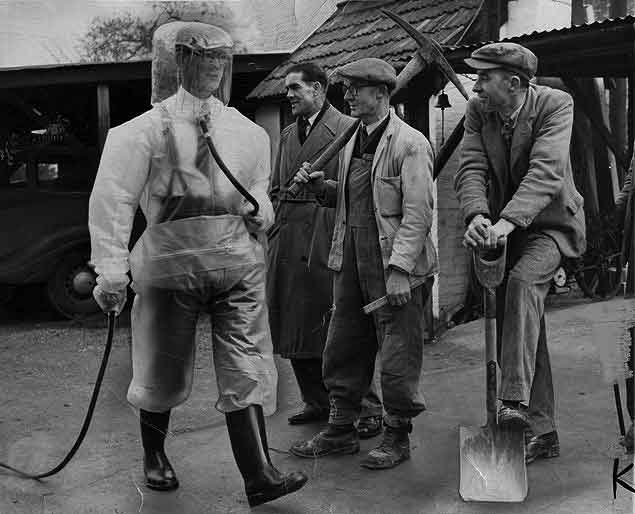We hear it all the time. “Why in the world do you do what you are doing?” We’ll admit, we never dreamed of cleaning RV waste holding tanks when we were kids. Or in school. Or even on the worst day of our “normal” jobs. But how bad is it?
We won’t lie. Sometimes the smell makes us get up and walk away from a cleaning. Other times, the “stuff” that comes out makes us close our eyes and go to our “happy place.” But at the end of the day, knowing we helped a fellow RVer to get their tanks cleaned and scrubbed — and probably solve a problem or two — makes it all worth it.
But just how bad is the stuff in your tanks? According to the Occupational Safety and Health Association (OSHA), human vomit and feces are defined biological material that poses a potential threat to the health and safety of humans, animals, or the environment. In other words, it’s a biohazard. What makes exposure to these body fluids so risky? For one, blood and certain body fluids can be contaminated with bloodborne pathogens, infectious microorganisms that can cause disease in humans.
Should an amount of waste larger than a dinner plate spill on the ground, this should be reported to the RV park or facility office who will call the local biohazard team to come in and clean it up. Yep, it’s that serious. So what can you do to prevent a spill and keep yourself safe?
When we do a typical cleaning, we’re very careful and methodical. You’ll see that we move slowly and deliberately. There’s a system to what we do. We follow certain steps in a set order and procedure. And we’re very careful when handling waste. In ALL CASES, we “double glove,” a process where we first put on skin-tight gloves made from a heavy-duty, high-density polyethylene material. Next a larger pair of neoprene rubber gloves is used that goes up the forearm about halfway. You may even see us don an environmental suit, mask and extra protection if there’s a clog or other severe problem (we’ve learned this lesson the hard way — don’t ask!).
Take special care with emptying your waste holding tanks. Move slowly and do not hurry. Perform the process in set steps, every time. Be sure to empty your black tank(s) first, using your onboard spraying system during emptying to help wash the inside of the tank. Then, when the black tank is empty, empty the gray tank, letting that water “wash” out any solids or residue from the black tank(s). Do not empty the two at the same time.
To prevent biohazard exposure, it is recommended that you always wear personal protective equipment such as gloves, eye protection, and face masks when handling another person’s blood or body fluids. OSHA’s Bloodborne Pathogens Standard instructs people to treat all bodily fluids as if they were biohazards.
The next time you empty your waste holding tanks, remember just what you are dealing with. Although it’s not a pleasant process, it is a part of RVing. And be thankful when you call us — or any other All Pro Water Flow dealer — when you have a clog or other severe problem. We’re dealing with some serious — and dangerous — “stuff” here.

